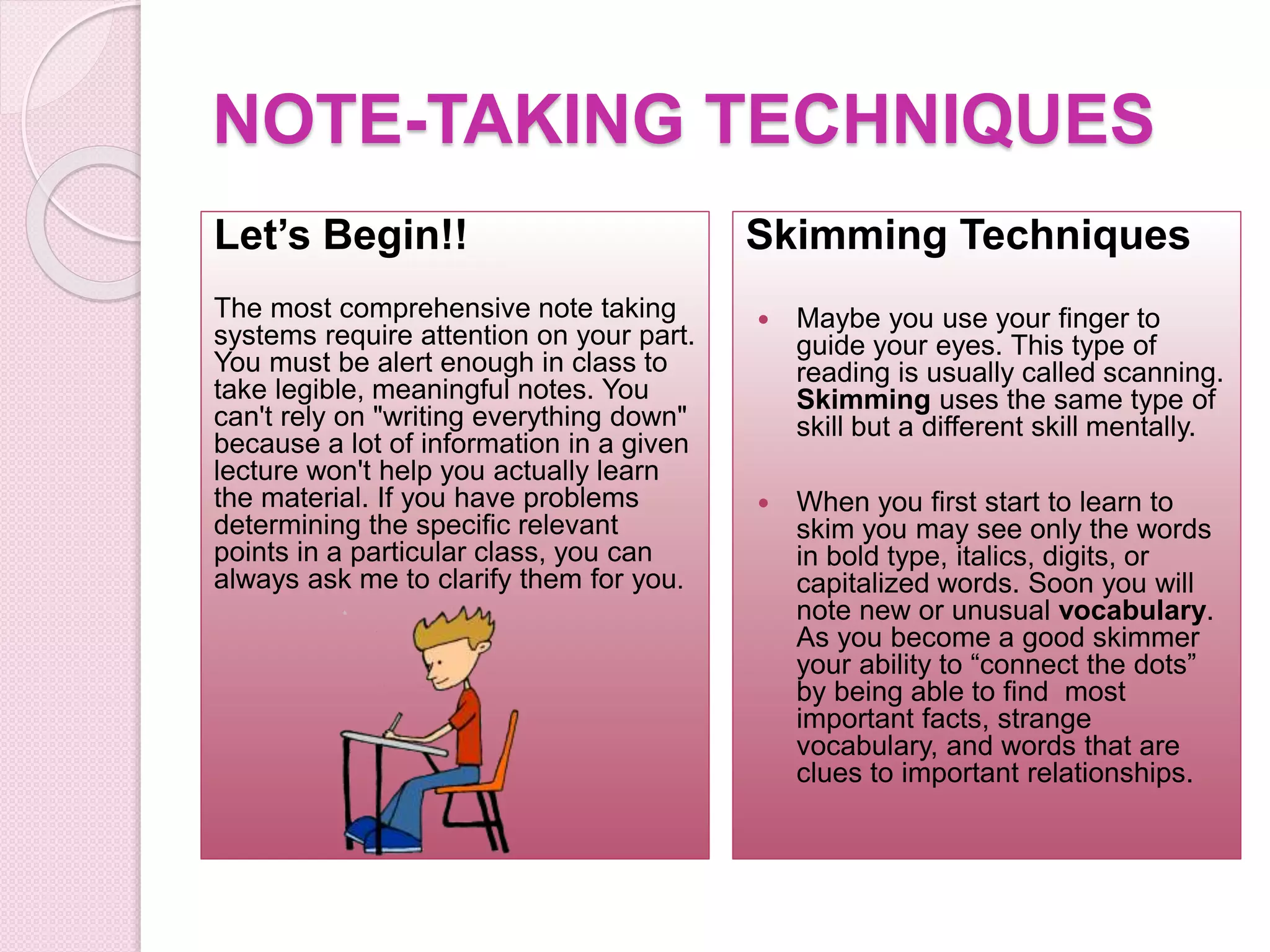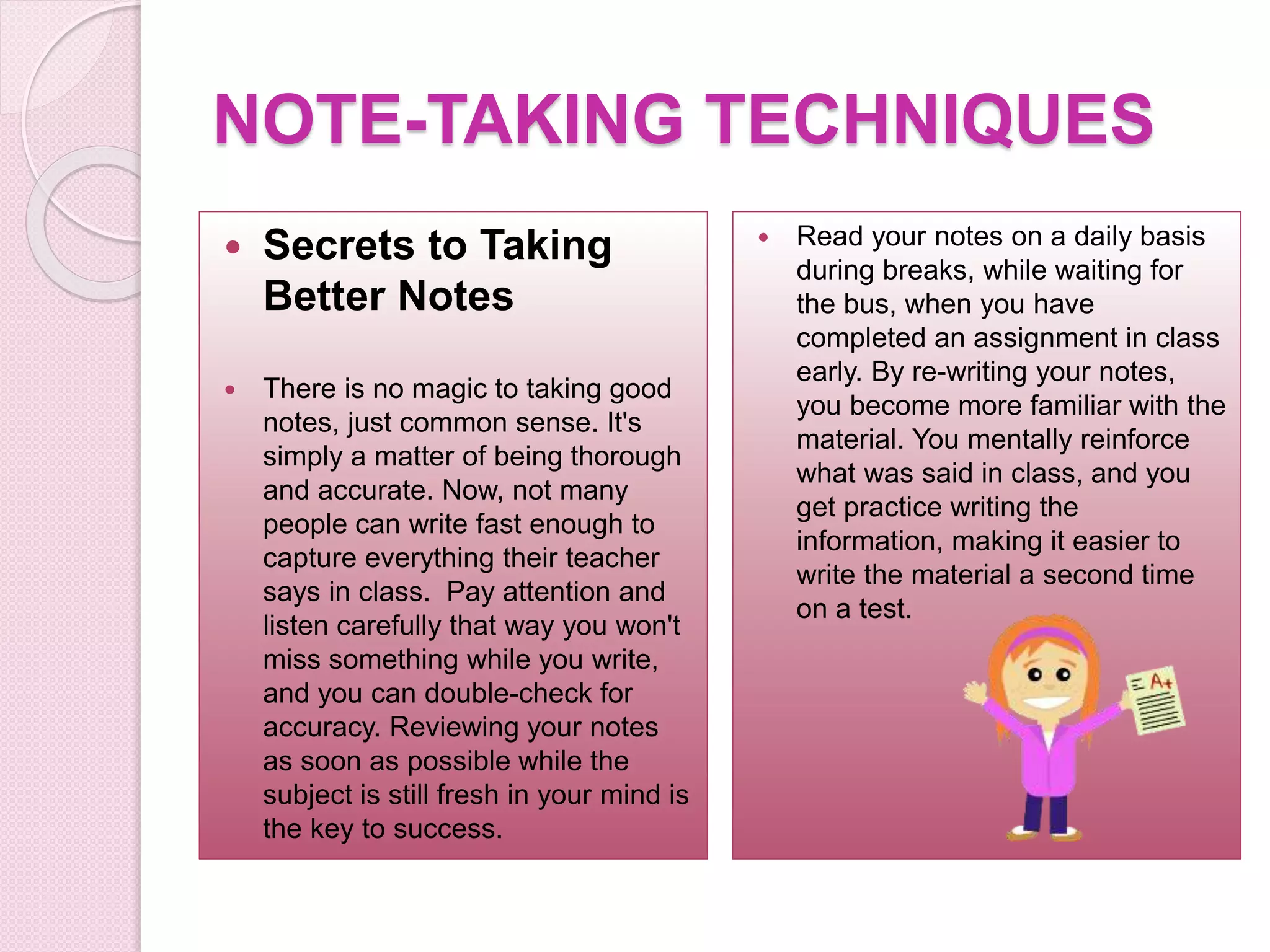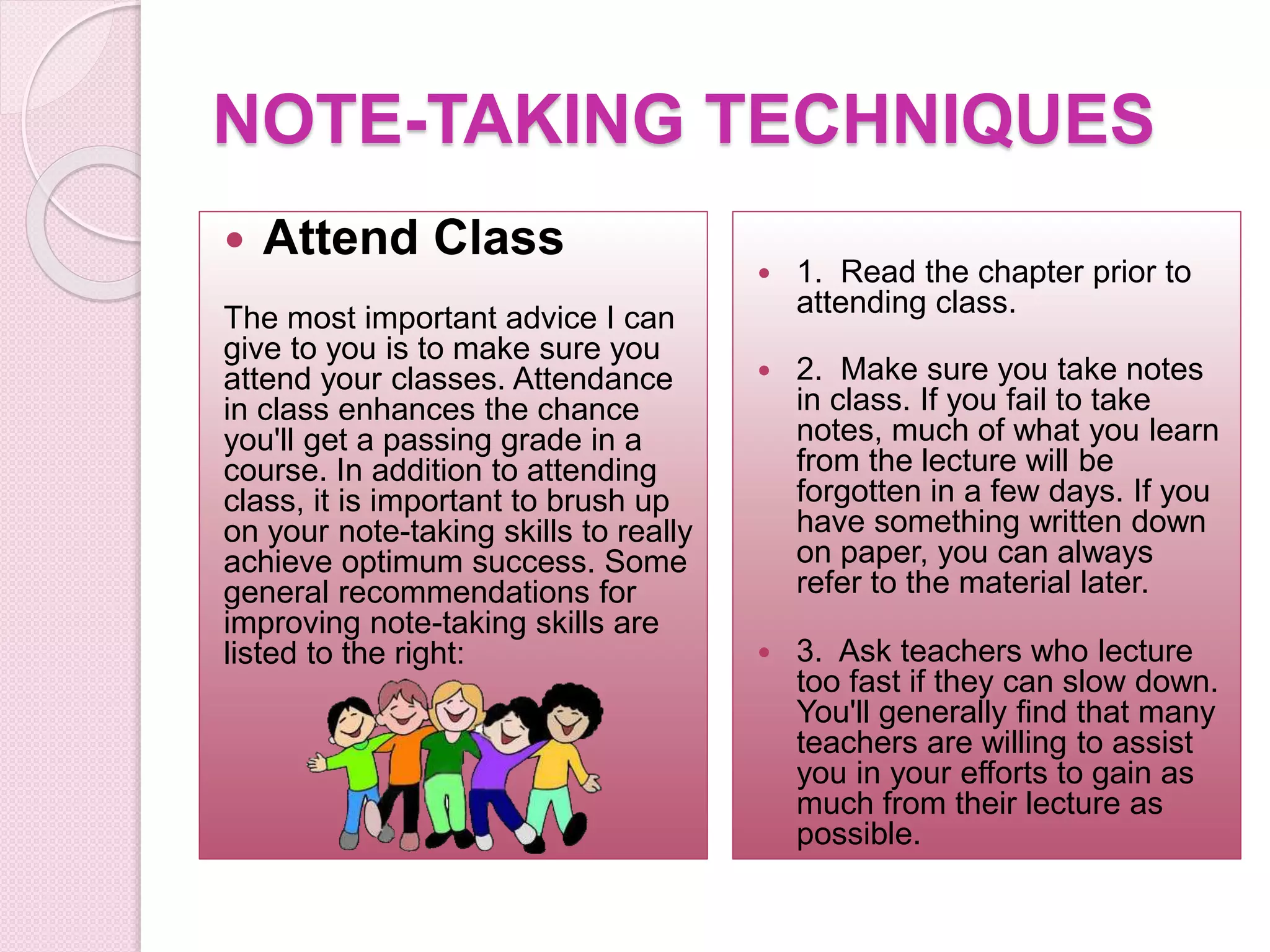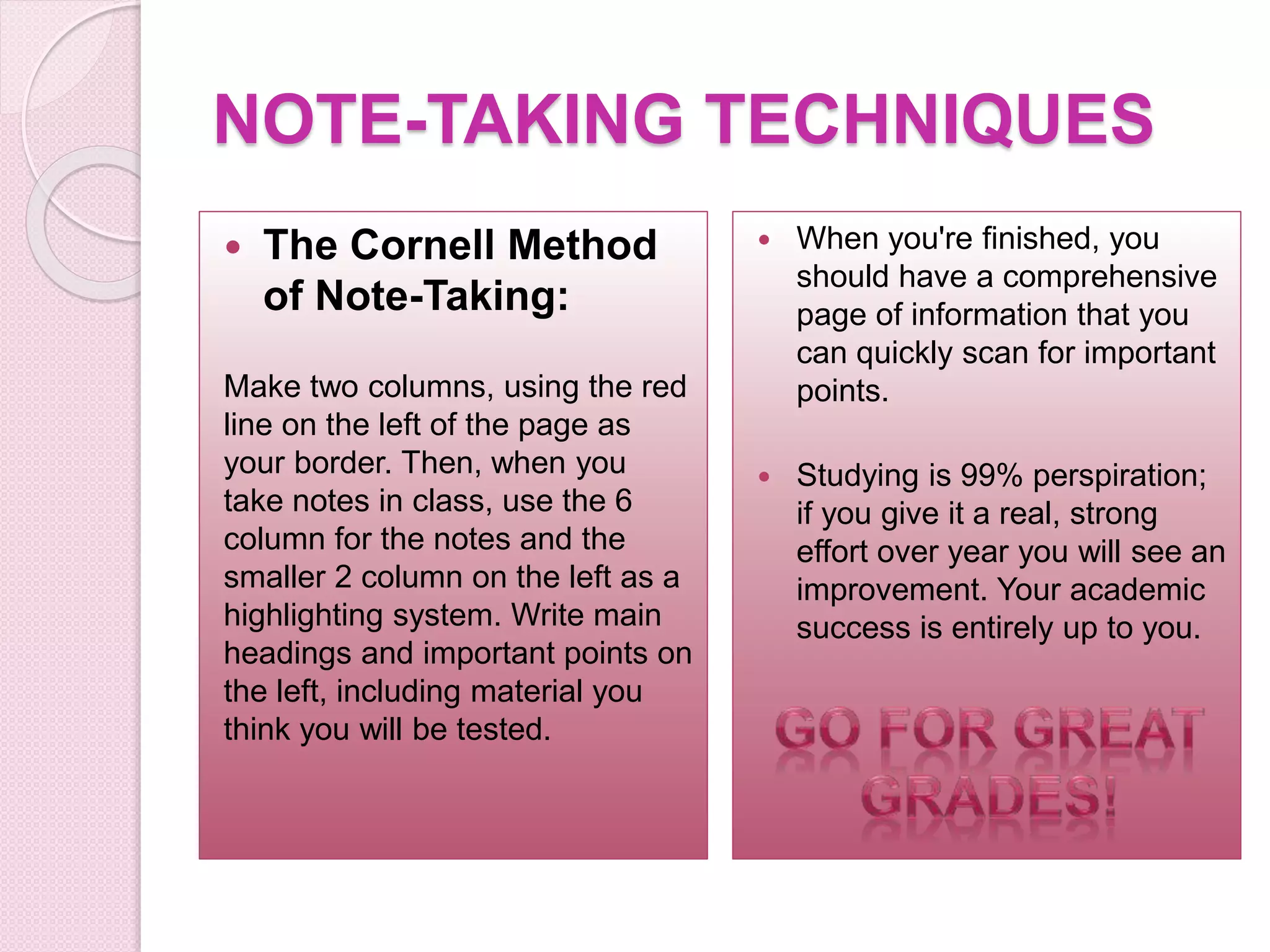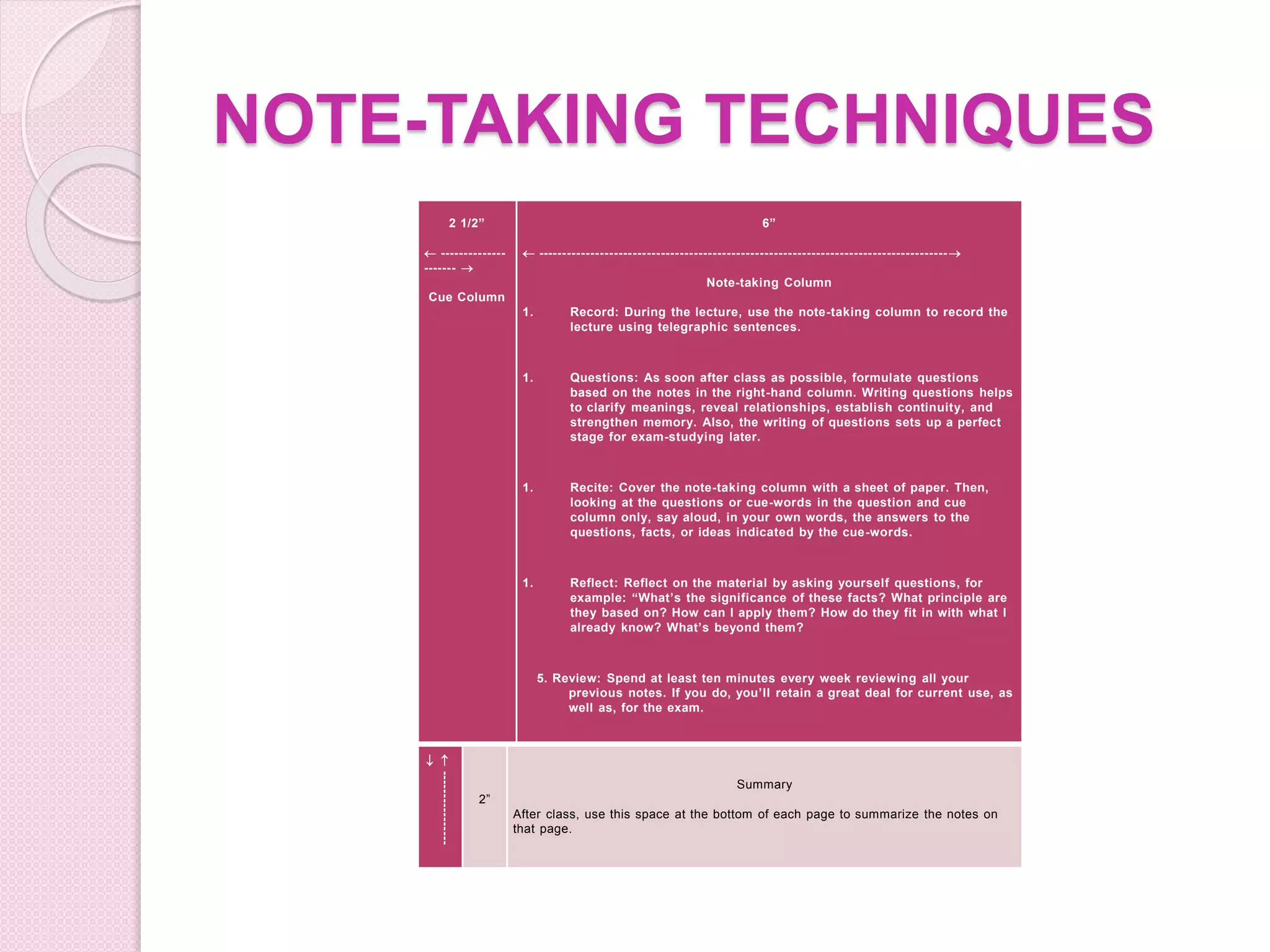The document provides tips and techniques for effective note-taking. It recommends being alert in class to take legible and meaningful notes, rather than writing down everything. It suggests using skimming techniques like focusing on bold, italicized and capitalized words to identify key points. The Cornell Note-taking method advises making two columns, with questions and cues in the left column and notes in the right, and summarizing each page after class. Reviewing notes daily and asking teachers to slow down if needed can also improve note-taking.
